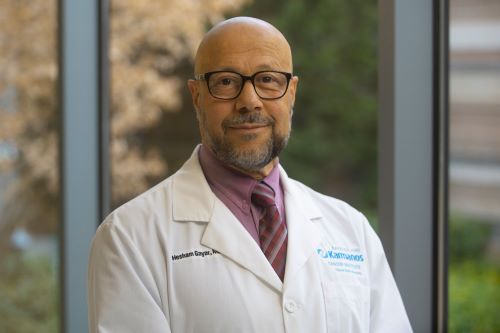Author: Leslie Toldo
When something suspicious shows up on a routine mammogram, patients are often asked to come back for further screening. It happened to Caroline Allen in May 2025.
“They called me back a week or so later and told me they saw something and wanted to take another look,” Caroline said. “I have dense breasts, so it has happened before. I didn’t think much of it.”
Caroline got the shock of her life when she learned the radiologist discovered a mass on her breast ultrasound.
“It was 5 millimeters- about the size of a pencil eraser,” Caroline said. “They got me in for a biopsy the next day.”
That biopsy fell just before the Memorial Day Holiday weekend. Waiting for her results was sheer agony for Caroline.
“I went over the results with my primary care doctor. I had invasive ductile carcinoma in my left breast,” Caroline said.
Suddenly, Caroline was caught up in a whirlwind. She went to see Dr. Ashley Richardson, a breast surgeon with the Karmanos Cancer Institute at McLaren Flint.
“She was awesome,” Caroline said. “I had a lumpectomy by the end of June. Dr. Richardson got all the cancer, and it had not spread.”
However, Caroline’s cancer journey was far from over. She needed radiation, and Dr. Richardson referred her to radiation oncologist Dr. Hesham Gayar.
“Dr. Gayar told me that studies found women with left-sided breast cancers, who had traditional radiation therapy, were developing heart issues 15 to 20 years later,” Caroline said. “He told me proton therapy would be a better option for me.”
X-rays, used in traditional radiation therapy, travel to the tumor, then continue delivering radiation beyond the tumor, exposing healthy tissue and organs to potential radiation damage.
“For left-sided breast cancer, conventional radiation is well known to increase the risk of heart disease, because of spillover and scattered radiation.,” said Dr. Gayar. “Proton therapy, on the other hand can completely spare the heart as it stops at the target without exiting through normal tissue, like conventional radiation.”
The overall risk of side effects during treatment can also be much lower with proton therapy.

“I had some fatigue, and very minimal burning,” Caroline said. “Otherwise, this whole journey has been a beautiful experience. I know that sounds weird, but from the tech who did my breast ultrasound, to Dr. Richardson and Dr. Gayar, all the nurses, and the techs at the McLaren Proton Therapy Center, my care was amazing.”
Dr. Gayar also enrolled Caroline in a breast cancer study at the McLaren Proton Therapy Center.
“We treated Caroline with 10 sessions of proton therapy- as is common for early-stage breast cancers,” Dr. Gayar said. “Studying Caroline’s and other patients’ cases will help us learn more about how these cancers respond to the treatment.”
The decision to take part in the study was an easy one for Caroline.
“It is positive,” Caroline said. “If something positive can come of this and it can help medicine further progress, it’s worth it.”
What Caroline really hopes her story will do is get the message through to other women about how vital routine mammograms are.
“What if I had waited another year to get that mammogram? How much more advanced would my cancer have been?” Caroline said. “When you get mammograms every year, it is easier to track the changes in your breasts.”
Dr. Richardson will be part of Karmanos Cancer Institute at McLaren Flint’s free breast cancer screening event coming up on October 14 from 4 to 6 p.m. For more information and to register, call (810) 342-1757.
To learn more about proton therapy or to schedule a consultation, visit mclaren.org/protontherapy.